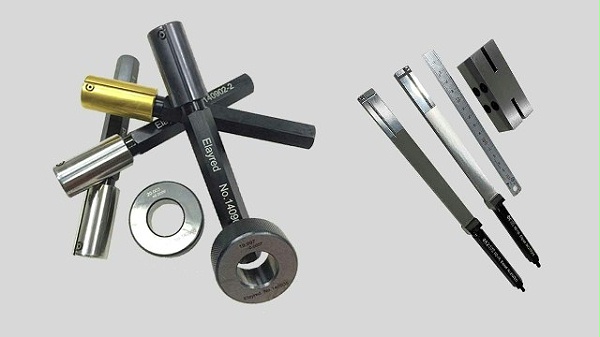Gauge is a special inspection tool without scale, when it is used to test the workpiece, it can only judge whether the workpiece is qualified, but can not measure the actual size of the workpiece. The gauge for inspecting the aperture of the workpiece is generally called the plug gauge, and the gauge for inspecting the shaft diameter of the workpiece is generally called the snap gauge.

The plug gauge has two parts: "pass gauge" and "stop gauge", which should be used in pairs, the smaller size of the plug gauge, the pass gauge and the stop gauge are directly prepared on a plug gauge body, and the larger size of the plug gauge is made into a sheet or rod. The through end of the plug gauge is in accordance with the hole of the workpiece to be measuredMMS(Dmin)Manufactured, stop gauge according to the hole being testedLMS(Dmax)When manufactured, in use, if the through end of the plug gauge can pass through the measured workpiece hole, it means that the measured aperture is greater than itDminIf the stopgauge is not plugged into the workpiece hole, it means that the aperture is less than itDmaxTherefore, it is known that the actual size of the measured hole is qualified within the specified limit size range, otherwise, if the pass gauge does not plug into the workpiece hole, or the stop gauge can pass through the measured workpiece hole, the hole is unqualified.
Similarly, the snap gauge for the inspection shaft is also divided into two parts: "pass gauge" and "stop gauge", and the pass end is according to the shaft of the workpiece to be measuredMMS(dmax)Manufactured, not gage according to the axis under testLMS(dmin)Manufacturing, in use, if the through end can pass the measured workpiece shaft, and the stop gauge can not be passed, it means that the actual size of the measured shaft is qualified within the specified limit size range, otherwise, it is unqualified.
We focus on micro precision, is a professional precision parts size pneumatic measurement equipment manufacturer, if you
Billion lerideInterested, welcome to click on our online customer service for consultation, or directly call the national unified service hotline
400-682-7787. We look forward to hearing from you!

